Tech agreement sets stage for U.S. private sector space launch sites in Australia
Sunday, 29 October 2023 11:29 The United States and Australia marked a significant milestone in their long partnership with the signing of a bilateral tech agreement Thursday.
The assistant secretary for international security and nonproliferation at the U.S. State Department, C.S. Eliot Kang, and the Australian Ambassador to the United States, Kevin Rudd, signed the U.S.-Australia Technology Safeguards Agreement in an
The United States and Australia marked a significant milestone in their long partnership with the signing of a bilateral tech agreement Thursday.
The assistant secretary for international security and nonproliferation at the U.S. State Department, C.S. Eliot Kang, and the Australian Ambassador to the United States, Kevin Rudd, signed the U.S.-Australia Technology Safeguards Agreement in an Smithsonian set to open Asteroid Bennu sample display
Sunday, 29 October 2023 11:29 The Smithsonian's National Museum of Natural History will unveil the first public display of a sample of Bennu-a carbon-rich, near-Earth asteroid-to museumgoers Friday, Nov. 3. The rocky fragment was collected from the asteroid by NASA's OSIRIS-REx mission, the first U.S. space mission to sample the surface of a planetary body since Apollo 17 in 1972. Samples from Bennu may provide insights into
The Smithsonian's National Museum of Natural History will unveil the first public display of a sample of Bennu-a carbon-rich, near-Earth asteroid-to museumgoers Friday, Nov. 3. The rocky fragment was collected from the asteroid by NASA's OSIRIS-REx mission, the first U.S. space mission to sample the surface of a planetary body since Apollo 17 in 1972. Samples from Bennu may provide insights into NASA is locating ice on Mars with this new map
Sunday, 29 October 2023 11:29 Buried ice will be a vital resource for the first people to set foot on Mars, serving as drinking water and a key ingredient for rocket fuel. But it would also be a major scientific target: Astronauts or robots could one day drill ice cores much as scientists do on Earth, uncovering the climate history of Mars and exploring potential habitats (past or present) for microbial life.
The need
Buried ice will be a vital resource for the first people to set foot on Mars, serving as drinking water and a key ingredient for rocket fuel. But it would also be a major scientific target: Astronauts or robots could one day drill ice cores much as scientists do on Earth, uncovering the climate history of Mars and exploring potential habitats (past or present) for microbial life.
The need Ascending Fang Turret: Sols 3991-3993
Sunday, 29 October 2023 11:29 The Curiosity rover team has been preparing for the start of the Solar Conjunction in November, when contact with all Mars spacecraft will be impossible for three weeks since Mars will be behind the Sun as seen from Earth. During that time, Curiosity will be following a long plan of instructions which were confirmed to have been successfully uploaded to the rover earlier this week. For now, Curi
The Curiosity rover team has been preparing for the start of the Solar Conjunction in November, when contact with all Mars spacecraft will be impossible for three weeks since Mars will be behind the Sun as seen from Earth. During that time, Curiosity will be following a long plan of instructions which were confirmed to have been successfully uploaded to the rover earlier this week. For now, Curi NASA supports tests of dust sensor to aid lunar landings
Sunday, 29 October 2023 11:29 A research team from the University of Central Florida recently tested an instrument designed to measure the size and speed of surface particles kicked up by the exhaust from a rocket-powered lander on the Moon or Mars. Supported by NASA's Flight Opportunities program, researchers evaluated the instrument in a series of flight tests on Astrobotic's Xodiac rocket-powered lander in Mojave, Califor
A research team from the University of Central Florida recently tested an instrument designed to measure the size and speed of surface particles kicked up by the exhaust from a rocket-powered lander on the Moon or Mars. Supported by NASA's Flight Opportunities program, researchers evaluated the instrument in a series of flight tests on Astrobotic's Xodiac rocket-powered lander in Mojave, Califor Uranus aurora discovery offers clues to habitable icy worlds
Sunday, 29 October 2023 11:29 The presence of an infrared aurora on the cold, outer planet of Uranus has been confirmed for the first time by University of Leicester astronomers.
The discovery could shed light on the mysteries behind the magnetic fields of the planets of our solar system, and even on whether distant worlds might support life.
The team of scientists, supported by the Science and Technology Facilit
The presence of an infrared aurora on the cold, outer planet of Uranus has been confirmed for the first time by University of Leicester astronomers.
The discovery could shed light on the mysteries behind the magnetic fields of the planets of our solar system, and even on whether distant worlds might support life.
The team of scientists, supported by the Science and Technology Facilit Venus had Earth-like plate tectonics billions of years ago, study suggests
Sunday, 29 October 2023 11:29 Venus, a scorching wasteland of a planet according to scientists, may have once had tectonic plate movements similar to those believed to have occurred on early Earth, a new study found. The finding sets up tantalizing scenarios regarding the possibility of early life on Venus, its evolutionary past and the history of the solar system.
Writing in Nature Astronomy, a team of scientists led
Venus, a scorching wasteland of a planet according to scientists, may have once had tectonic plate movements similar to those believed to have occurred on early Earth, a new study found. The finding sets up tantalizing scenarios regarding the possibility of early life on Venus, its evolutionary past and the history of the solar system.
Writing in Nature Astronomy, a team of scientists led Terran Orbital receives $7M addition to Tranche 1 contract
Sunday, 29 October 2023 11:29 Lockheed Martin has awarded Terran Orbital Corporation (NYSE: LLAP) an Engineering Change Proposal (ECP) to host additional payloads. The contract modification adds $7.7M to an existing satellite design and manufacturing program. This addition was awarded following a successful Critical Design Review (CDR) earlier this year. The modification incorporates additional previously anticipated scope i
Lockheed Martin has awarded Terran Orbital Corporation (NYSE: LLAP) an Engineering Change Proposal (ECP) to host additional payloads. The contract modification adds $7.7M to an existing satellite design and manufacturing program. This addition was awarded following a successful Critical Design Review (CDR) earlier this year. The modification incorporates additional previously anticipated scope i Mouse embryos grown in space for first time: Japan researchers
Sunday, 29 October 2023 09:30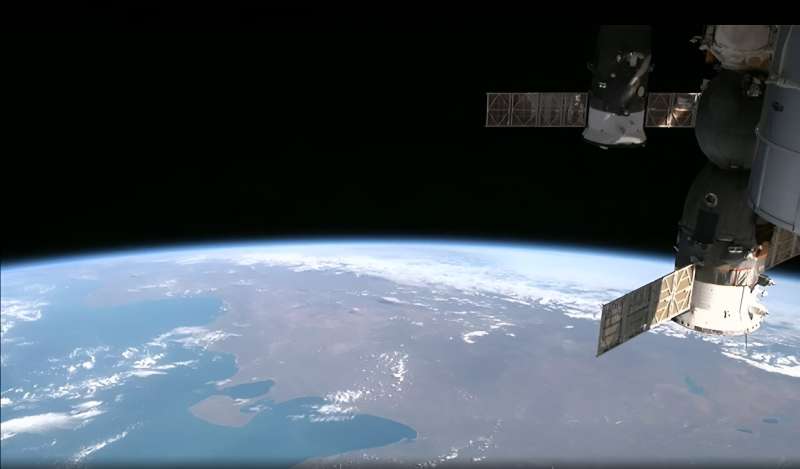
Mouse embryos have been grown on the International Space Station and developed normally in the first study indicating it could be possible for humans to reproduce in space, a group of Japanese scientists said.
The researchers, including Teruhiko Wakayama, professor of University of Yamanashi's Advanced Biotechnology Centre, and a team from the Japan Aerospace Space Agency (JAXA), sent frozen mouse embryos on board a rocket to the ISS in August 2021.
Astronauts thawed the early-stage embryos using a special device designed for this purpose and grew them on the station for four days.
"The embryos cultured under microgravity conditions developed" normally into blastocysts, cells that develop into the fetus and placenta, the scientists said.
The experiment "clearly demonstrated that gravity had no significant effect," the researchers said in a study that was published online in the scientific journal iScience on Saturday.
Blue Origin reveals mockup of Blue Moon lunar lander prototype
Saturday, 28 October 2023 22:06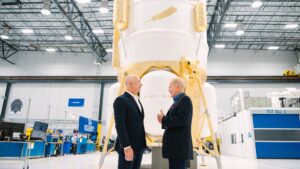
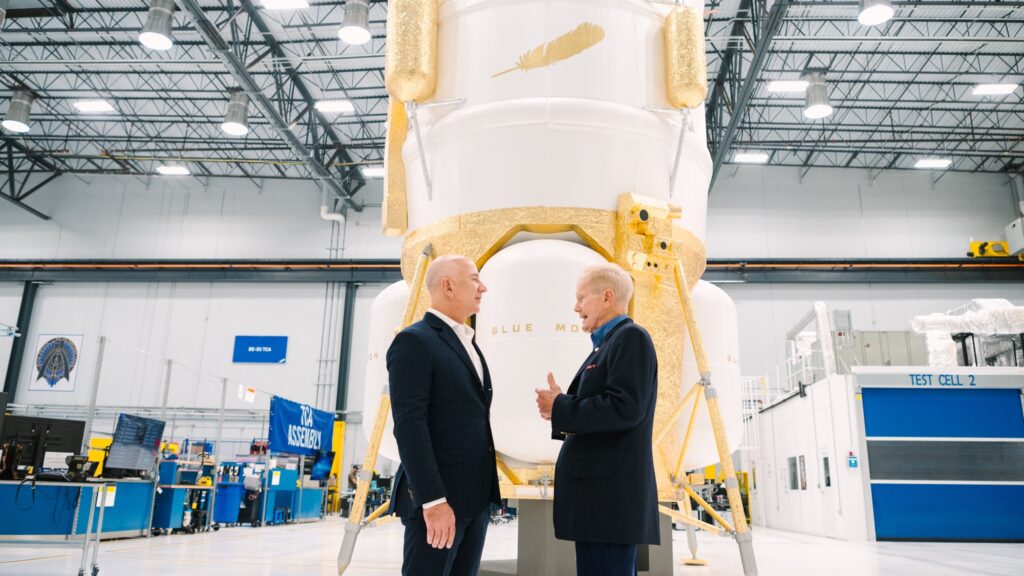
FAA anticipates extension of commercial spaceflight regulatory learning period
Saturday, 28 October 2023 19:57

Intuitive Machines delays first lander mission to January
Friday, 27 October 2023 20:32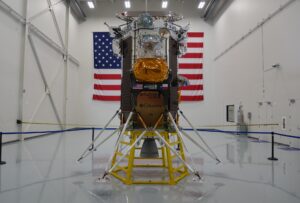
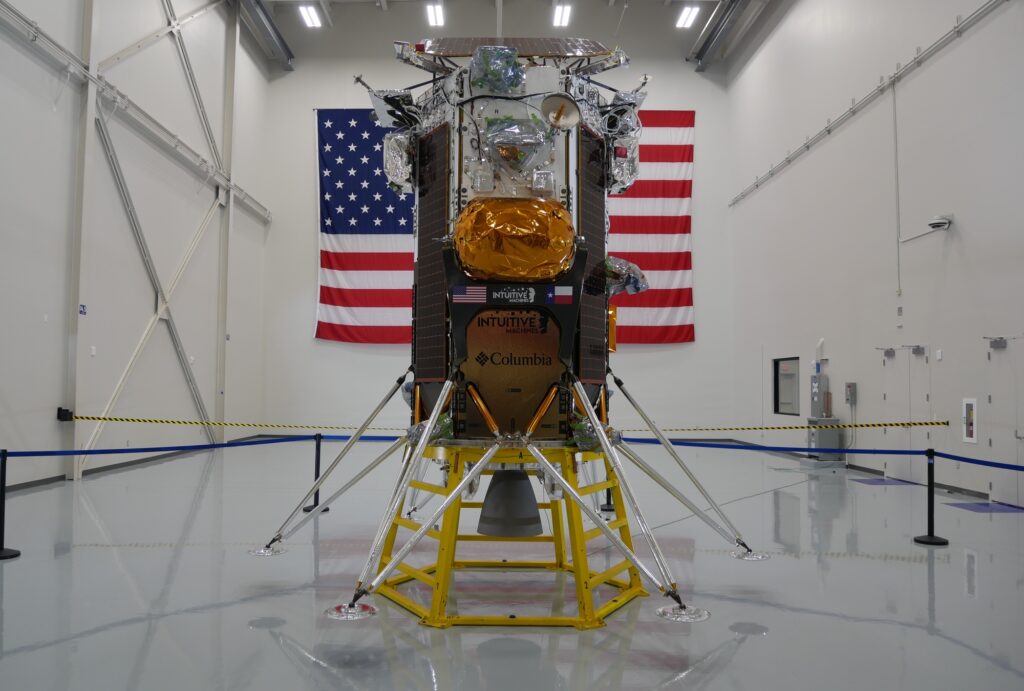
NASA rocket to see sizzling edge of star-forming supernova
Friday, 27 October 2023 16:14
A new sounding rocket mission is headed to space to understand how explosive stellar deaths lay the groundwork for new star systems. The Integral Field Ultraviolet Spectroscopic Experiment, or INFUSE, sounding rocket mission, will launch from the White Sands Missile Range in New Mexico on Oct. 29, 2023, at 9:35 p.m. MDT.
For a few months each year, the constellation Cygnus (Latin for "swan") swoops through the northern hemisphere's night sky.
Dealing with space debris
Friday, 27 October 2023 16:13
As yet another space rocket is launched and more technology is placed into orbit, the problem of space junk grows and grows, not to mention the pollution from all the fuel burned en route.
A review in the International Journal of Student Project Reporting has looked at possible solutions to the problem of the abundance of space junk. Jennifer Stein, David Castillo, Elise Bedell, Erriana Thomas, and Nicolas Valiente of the University of Florida in Gainesville, Florida, U.S., have looked at whether there are cost-effective, environmentally benign, and efficient methods that might be used to minimize the harm from debris in space, which can damage other craft in orbit, potentially harm astronauts, and represent a risk when it falls to earth.
Space junk can be defined as non-functional man-made objects that remain in near-Earth orbit. There is growing concern regarding such debris as there is no way to track it all, especially debris less than 10 millimeters or so in width nor to allow for potential hazards to spacecraft and satellites. Anything larger can be monitored and tracked with telescopes or radar.
NASA tech breathes life into potentially game-changing antenna design
Friday, 27 October 2023 16:07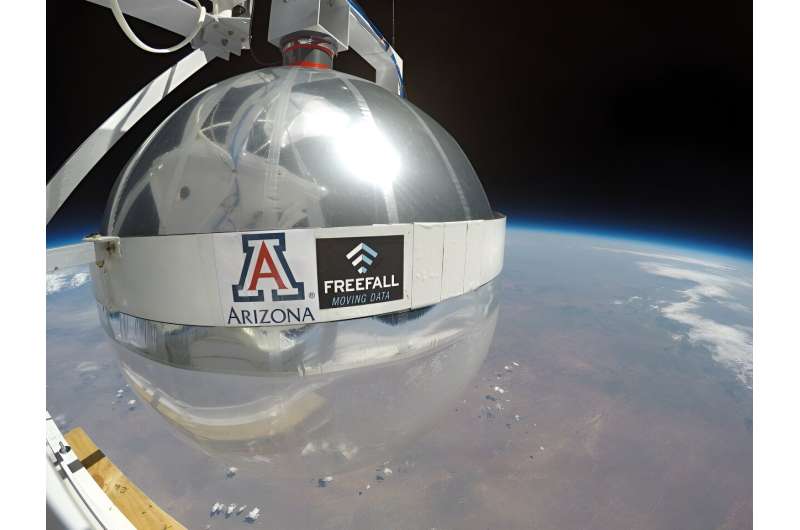
Some 30 years ago, a young engineer named Christopher Walker was home in the evening making chocolate pudding when he got what turned out to be a very serendipitous call from his mother.
Taking the call, he shut off the stove and stretched plastic wrap over the pot to keep the pudding fresh. By the time he returned, the cooling air in the pot had drawn the wrap into a concave shape, and in that warped plastic, he saw something—the magnified reflection of an overhead lightbulb—that gave him an idea that could revolutionize space-based sensing and communications.
That idea became the Large Balloon Reflector (LBR), an inflatable device that creates wide collection apertures that weigh a fraction of today's deployable antennas.

